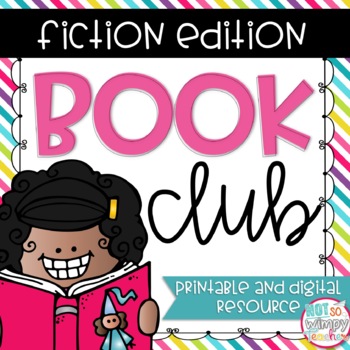Thanks so much to Literacy Loving Gals for organizing this book study and getting the word out on this extremely helpful reading strategy resource. I love the way this book is set up and I know I'll be referring to it often this school year.
Today I'm sharing some details on Goal 5 of The Reading Strategies Book, which is all about understanding plot and setting. Basically it's about understanding what is happening in the book.
A big part of this is visualizing. Children must explicitly be taught this skill.
This Goal is perfect for me because I'm constantly saying the following phrase to my class...
These visualizing skills are so important to develop and model to students.
So often this step is skipped because it's a skill that is done automatically in mature readers. When this step is skipped children tend to become readers that finish books, but can never tell you about the book they're reading. As a child, I was one of these readers. My eyes would move and I was decoding words, but it wasn't going anywhere. Literally. Nowhere. I pictured very little as I read until I was a bit older and a wonderful teacher said, "You have to picture it. Put yourself in that book." From that day on I LOVED to read. Now I stress the importance of the skill in my own classroom. Seriously, by the end of the year they're all saying, "We know Mrs. M! Make a Movie in Your Mind!"
It makes me so happy when it sticks...
Here are a few strategies from the chapter that can help your students become active, thinking readers that are able to visualize.
Reactions Help You Find the Problem
This strategy is all about teaching students the importance of noticing how the character is reacting to a situation in the books. Further the author, Jennifer Seravello, encourages the teacher to use an extension prompt such as, "What does that reaction tell you about what he or she is feeling?"
This strategy could be completed in a Double Entry Journal. You could also have the students put post-its in their books with an explanation of the character's reaction at that point.
An example used in the book is from Charlotte's Web when Fawn is "shrieking" because she discovers Papa is planning, "to do away the pig". That word, "shrieking" can really make an impression on a reader and we want to teacher our young ones to pick up on clues like these.
Practice makes permanent!
Chapter-End Stop Signs
At the end of each chapter the students will write one important event from that chapter. This could be done on a post-it and placed at the end of the chapter. It could also be completed on a paper like the one they showed in the book below.
This a great way to get students thinking and reflecting about what they read.
It would also help them with retelling and summarizing skills.
Series Books Have Predictable Plots
The author suggests using this strategy with your book clubs or reading groups. Throughout the book the students would discuss similarities between the plots of the books in the same series. Then to extend on that encourage the students to use what they know about that pattern to predict what will happen in the current book they're reading.
They use the example of The Magic Tree House, which is the perfect example in my opinion. After reading a couple of these the students should see the pattern of the book. The book club could create a poster like the one shown in the book.
This poster shows how students were actively thinking and comparing throughout their book club. We then want this process to carry over into independent reading. Again, practice makes permanent!
Another idea I thought of to include some writing would be to create a story with a similar pattern as the series they're reading. It would be their own version of an adventure with those characters in a similar plot line.
You guys need to pick up this book! It's easy to utilize & implement the strategies listed.
Thanks for stopping by & Thanks to The Literacy Loving Gals for inviting me to join in!







































